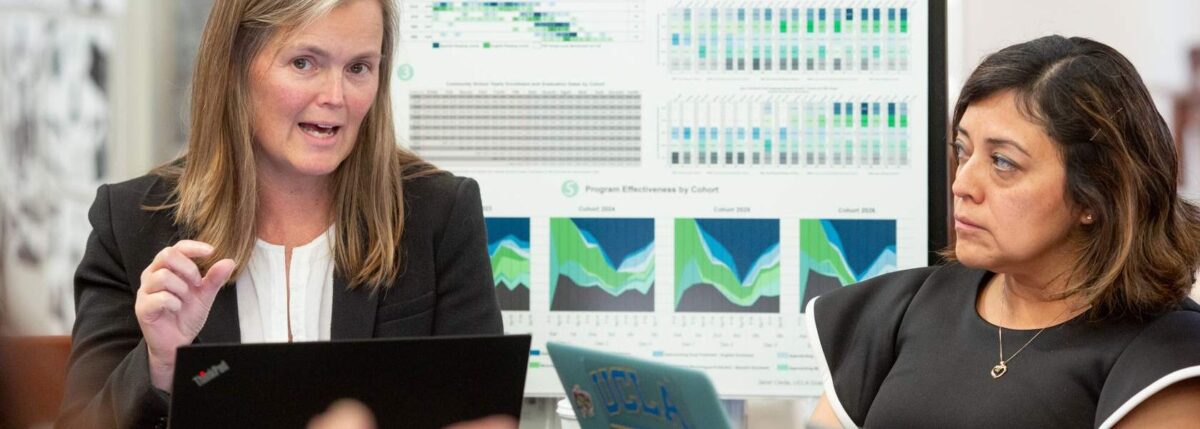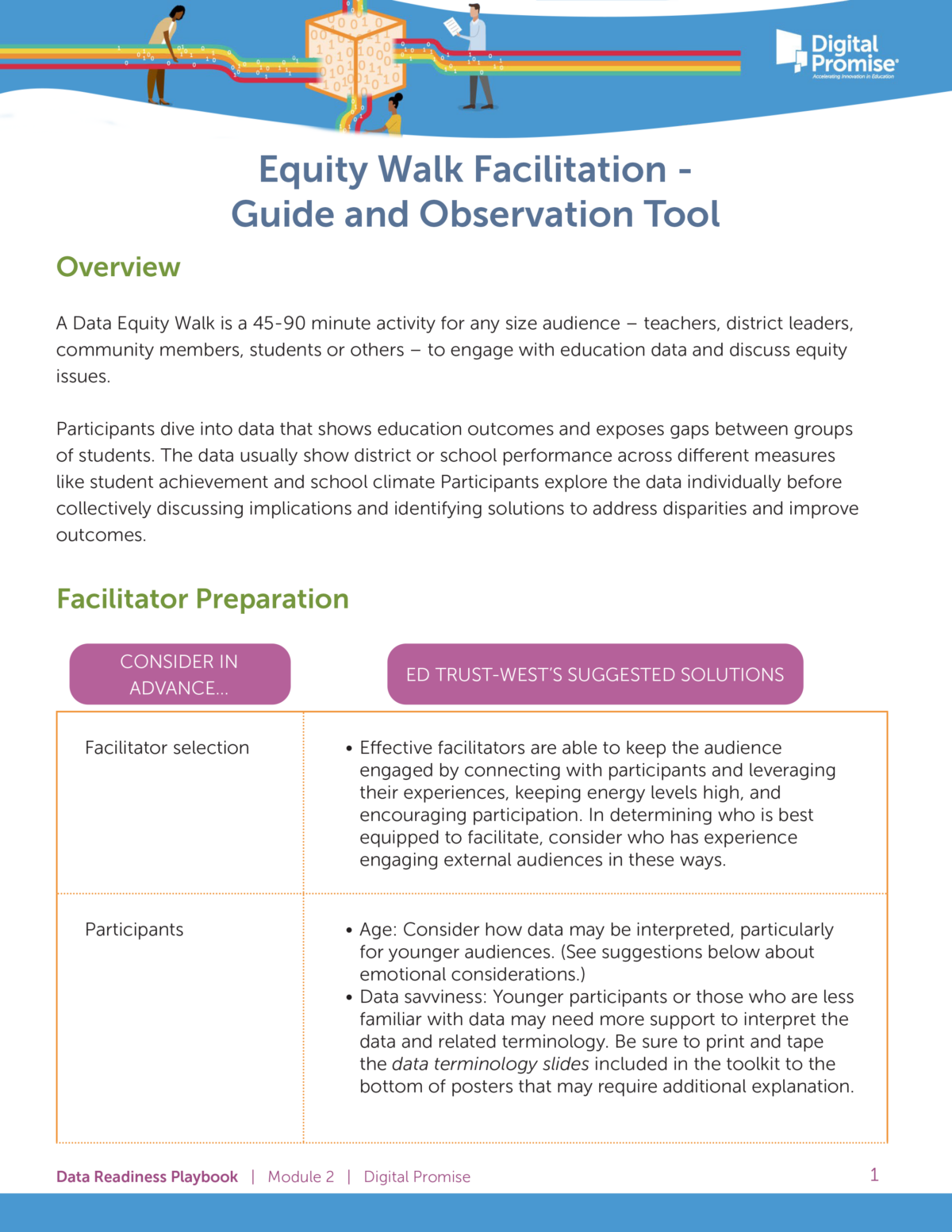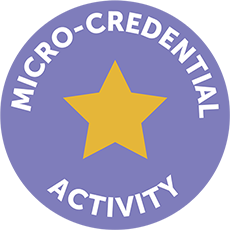Data Equity Walk Toolkit
Overview
Implement a data equity walk at your district using this toolkit and facilitator guide below.

Data Equity Walk: Facilitator Guide
A Data Equity Walk is a 45-90 minute activity for any size audience – teachers, district leaders, community members, students or others – to engage with education data and discuss equity issues.
Participants dive into data that shows education outcomes and exposes gaps between groups of students. The data usually show district or school performance across different measures like student achievement and school climate Participants explore the data individually before collectively discussing implications and identifying solutions to address disparities and improve outcomes.


Guiding Questions
You should include a poster with – or project onto a screen where all participants can see –any combination of the guiding questions below. The second question may be more appropriate to include for student audiences. These questions should be continually referenced throughout the DEW activity (see components in the chart below).
Conversation Prompts/Questions
As you start your conversations, think about how you will center and HOLD space for our traditionally marginalized voices and have those traditionally not-marginalized step back and listen. These are just a few ideas – get creative and tailor to your audience! Flip the cards over by clicking the rotating arrows to know when to use the questions and for which audience.
So what I hear you saying is…
Prompt type: Follow up/Clarifying Audience: All
Did this come up in anyone else’s discussion?
Prompt type: Follow up (espec. for large-group conversation) Audience: All
Why do you think that is?
Prompt type: Follow up Audience: All
What do you think needs to change?
Prompt type: Follow up Audience: All
What are some examples of places or practices that are improving education?
Prompt type: Follow up Audience: All (espec. practitioners, advocates)
How many of you have seen better/positive examples?
Prompt type: Follow up Audience: Students
How will the data you’ve looked and the conversations you’ve had today inform your work going forward?
Prompt type: Closing/Next steps Audience: All
What piece of data from today do you anticipate will most impact how you think going forward?
Prompt type: Closing/Next steps Audience: All
What will you do with the information you learned/discussed today?
Prompt type: Closing/Next steps Audience: All (espec. students)
How might you connect with a fellow participant to collaborate in the future?
Prompt type: Closing/Next steps Audience: All
What types of relationships need to be formed across sectors and boundaries to bring about change?
Prompt type: Closing/Next steps Audience: Advocates, policymakers

Locate the facilitator guide in your resources folder labeled “Equity Walk Facilitation – Guide and Observation Tool 2.0”. Become familiar with this guide and use it with internal district stakeholders. Then find sample data sets from your district, be sure to de-identify any student direct identifiers. To earn this microcredential upload photos of your Data Equity Walk (DEW) in action and three major benefits of Data Interoperability.